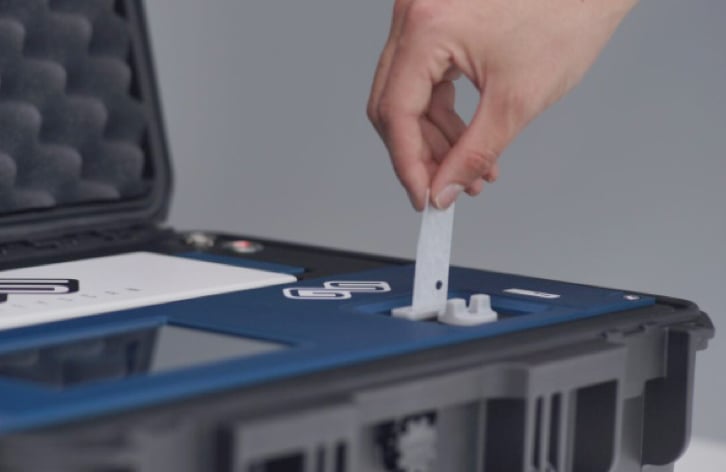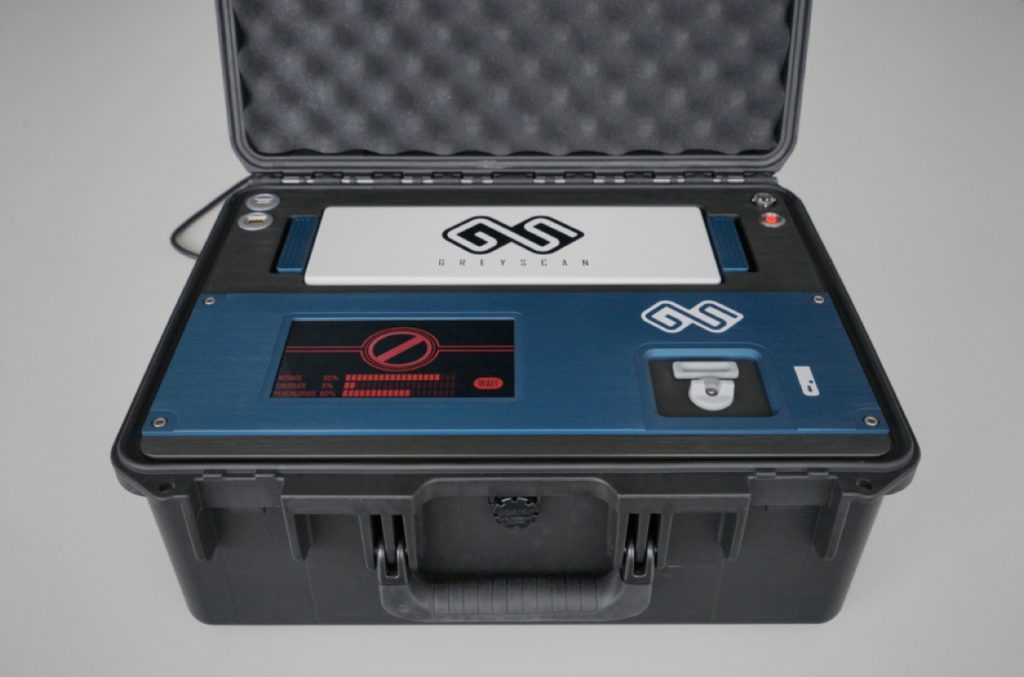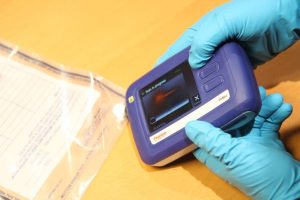As law enforcement agencies start to open to the post COVID environment, they should be prepared to...
Susan F. Hallowell, PhD
 Inorganic explosives are ubiquitous due to the ready availability of chemicals necessary for construction of IEDs. The step by step procedures of how to make an effective bomb have been published in Inspire, the Al Qaeda in the Arabian Peninsula (AQAP) English language magazine, and on the internet. With the ready source of material and detailed instructions, these Improvised Explosive Devices (IEDs) made from inorganic explosives are used for fabrication of pipe bombs, pressure cooker bombs, suicide vests, and car bombs. IEDs can be delivered in a vehicle, carried, placed, or thrown by a person, delivered in a package, left behind in a busy area, or concealed on the roadside. Ammonium nitrate, often used in IEDs, is the insurgents’ weapon of choice against American troops in Afghanistan and is responsible for attacks such as the Boston Marathon Bombing. Improvised explosive devices are fabricated from commonly available materials such as fertilizer (urea nitrate or ammonium nitrate or potassium chlorate), gunpowder (75% potassium nitrate with some sulfur and charcoal), pyrotechnics (containing gun powder, potassium chlorate or potassium perchlorate) and hydrogen peroxide. It is clear that there are many IED incidents on a daily basis across the globe. In the US, all incidents are noted and reported on a yearly basis. The Annual Explosives Incident Report (EIR) reviews many aspects, including bombing and explosives related incidents and threats from information reported to the United States Bomb Data Center (USBDC), the Bomb Arson Tracking System (BATS) and case entry contributions from its 11,478 active users. According to the 2015 annual report, the period of January 1 through December 31 2015, the materials most commonly used to make bombs were nitrates, chlorates and perchlorates. These categories of materials account for 67% of the IEDs in the US during the 5-year period from 2010 through 2015. [1] On April 15, 2013, two pressure cooker IEDs exploded near the finish of the Boston Marathon. Authorities confirmed that the bombers (brothers) used bomb-making instructions found in the Al Qaeda in the Arabian Peninsula Inspire magazine.[2][3] After the suspects were identified, The Boston Globe reported that one brother had purchased fireworks from a fireworks store in New Hampshire.[4] The pressure cookers were filled with nails, ball bearings, and black powder.
Inorganic explosives are ubiquitous due to the ready availability of chemicals necessary for construction of IEDs. The step by step procedures of how to make an effective bomb have been published in Inspire, the Al Qaeda in the Arabian Peninsula (AQAP) English language magazine, and on the internet. With the ready source of material and detailed instructions, these Improvised Explosive Devices (IEDs) made from inorganic explosives are used for fabrication of pipe bombs, pressure cooker bombs, suicide vests, and car bombs. IEDs can be delivered in a vehicle, carried, placed, or thrown by a person, delivered in a package, left behind in a busy area, or concealed on the roadside. Ammonium nitrate, often used in IEDs, is the insurgents’ weapon of choice against American troops in Afghanistan and is responsible for attacks such as the Boston Marathon Bombing. Improvised explosive devices are fabricated from commonly available materials such as fertilizer (urea nitrate or ammonium nitrate or potassium chlorate), gunpowder (75% potassium nitrate with some sulfur and charcoal), pyrotechnics (containing gun powder, potassium chlorate or potassium perchlorate) and hydrogen peroxide. It is clear that there are many IED incidents on a daily basis across the globe. In the US, all incidents are noted and reported on a yearly basis. The Annual Explosives Incident Report (EIR) reviews many aspects, including bombing and explosives related incidents and threats from information reported to the United States Bomb Data Center (USBDC), the Bomb Arson Tracking System (BATS) and case entry contributions from its 11,478 active users. According to the 2015 annual report, the period of January 1 through December 31 2015, the materials most commonly used to make bombs were nitrates, chlorates and perchlorates. These categories of materials account for 67% of the IEDs in the US during the 5-year period from 2010 through 2015. [1] On April 15, 2013, two pressure cooker IEDs exploded near the finish of the Boston Marathon. Authorities confirmed that the bombers (brothers) used bomb-making instructions found in the Al Qaeda in the Arabian Peninsula Inspire magazine.[2][3] After the suspects were identified, The Boston Globe reported that one brother had purchased fireworks from a fireworks store in New Hampshire.[4] The pressure cookers were filled with nails, ball bearings, and black powder.
The fabrication of an IED invariably leaves behind a trail of explosive residues at trace level amounts, as do many fragments recovered for post blast analysis. This residual contamination can be exploited to determine the presence and kind of explosive used in an IED by collecting and analyzing these trace residues. In a post blast analysis, fragments are carefully collected and sent back to a forensic laboratory for chemical residue analysis. The presence of pre-blast trace residues is used to screen for IEDs at security checkpoints. During the explosive evidence analysis, scientists will confirm the type of explosion that occurred, identify the type of explosive material (or explosive precursors such as diesel fuel or ammonium nitrate used in fertilizer). Ideally, an explosive analysis will provide enough information so that the origin of the device can be determined. While ion mobility spectrometry has become a mainstream detection method for screening for the presence of organic based explosives (such as RDX, PETN and TNT), IMS lacks sensitivity to common homemade explosives made from inorganic salts at a time when homemade explosives are being used with increased frequency.
A few of the more volatile nitrates (such as urea nitrate) can be detected with Ion Mobility Spectrometry (IMS), and colorimetric kits are used to detect inorganic explosives in the field, however colorimetric kits demonstrate sensitivity at the microgram level for inorganic explosives and are not sensitive at the nanogram level necessary to detect trace residues of explosives resulting from either bomb building exercises or for post blast analysis of bombs built with these kinds of explosives. Additionally, multiple colorimetric agents must be used to detect the suite of inorganic explosives. Colorimetric kits are not feasible for routine checkpoint screening or post blast analysis of fragments since they lack the sensitivity and they are single-use. Unlike automated analysis, colorimetric tests do not allow for the retention of the collected data.
Capillary Zone Electrophoresis (CZE) has been an analytical method used in laboratory environments for decades. Analysis times are typically up to a half an hour and must be run by a skilled operator. CZE is a method for separating ions of differing sizes, with an underlying principal similar to ion mobility spectrometry, except the separation occurs in an aqueous phase rather than in the gas phase. A high voltage (HV) electric field is applied to ions in solution. These ions move through the fluid in a direction according to the polarity of the electric field and the polarity of the ion. The speed of each ion is determined by the strength of the electric field and the charge of the ion working against the fluidic resistance of the other fluid in the capillary. Due to the different movement rates of different ions, CZE is able to differentiate them by measuring the time the ions take to reach a known distance from their starting position. This technology can therefore be utilized for the detection of inorganic molecules present within explosive devices.
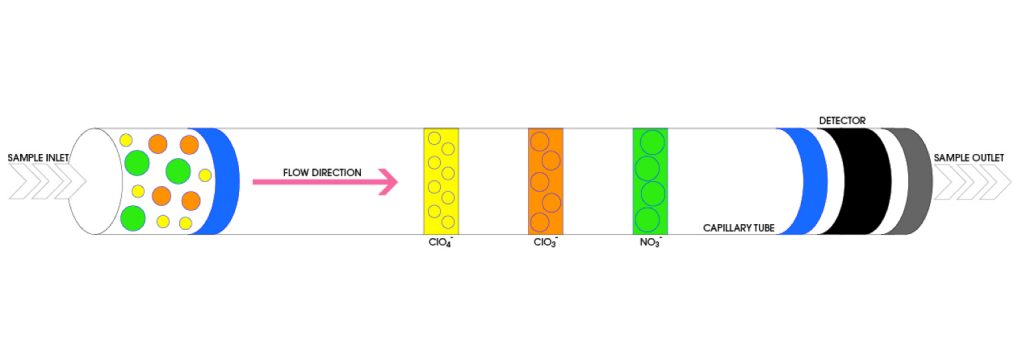 Figure 1: Separation of inorganic explosives anions using capillary zone electrophoresis
Figure 1: Separation of inorganic explosives anions using capillary zone electrophoresis
As with IMS detectors, the sample is collected on a small swab called a sample trap that is used to collect from the surface of the suspect item and then is inserted into a sample inlet (figure 2). The swab is automatically rinsed (eluted) with a small quantity of water which dissolves the salt. The dissolved salts are separated into positive charged cations such as sodium, ammonium and potassium and negative charged anions such as the nitrates, chlorates and perchlorates.
The instrumentation needed to perform CZE detection is relatively simple in concept. The main system components are a sample inlet, two buffer reservoirs, a capillary column, electrodes, a high voltage power supply, a detector, and a computer to run the system and collect and analyze the data. A portion of the wash from the sample swab is injected into the narrow bore capillary column for analysis by the CZE. The nitrate, chlorate and perchlorate anions of the explosive residue from the injected sample are pulled through this buffer solution towards the anode (positive electrode) during the CZE analysis, with different ions moving at different rates.
The results can be displayed as an electropherogram which is used to identify the detected peaks. The amplitudes and timings of target ions are compared with the amplitude and timings of the internal standard allow the concentration of each target anion to be calculated. The mass of the target compound present on the surface sampled can then be calculated and compared to the alarm thresholds. If sufficient threat compounds are detected, an alert is shown to the operator that an inorganic explosive has been detected (a red light/green light display).
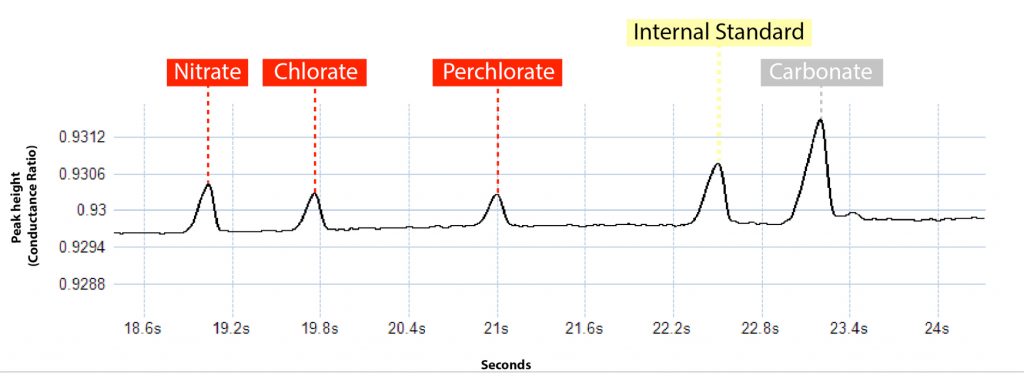 Figure 3 - Electropherogram of inorganic explosives (courtesy GreyScan Pty Ltd)
Figure 3 - Electropherogram of inorganic explosives (courtesy GreyScan Pty Ltd)
Compared to early developmental instruments, modern CZE detectors are fully automated, with precise computer control of all operations. Only recently has a CZE system has been miniaturized and ruggedized for field use. The GreyScan ETD 100 (manufactured by GreyScan Pty Ltd) is now available for security screening applications for detection of inorganic based Improvised IEDs.
This system provides the high-resolution detection capabilities of a laboratory system in a field robust and compact unit. Featuring a lightweight design, the unit is highly portable, allowing for operation in multiple environments. The system has been designed for continuous throughput of samples, with a rapid analysis time in the order of 30 seconds. Designed for ease of use by field agents, the GreyScan system aligns with current security concept of operations. The system follows a similar user operational process to existing explosive trace detectors. The availability of this new technology extends current security capabilities, providing rapid, sensitive and accurate detection of inorganic explosives for a wide variety of both military and civilian applications.
References
1. United States Bomb Data Center (USBDC) Explosives Incident Report (EIR) 2015, pg 6. https://www.atf.gov/rules-andregulations/docs/report/2015usbdcexplosiveincidentreport.pdf.
2. "Inspire Magazine: A Staple Of Domestic Terror". Anti-Defamation League. Retrieved April 11, 2015.
3. Serrano, Richard A.; Mason, Melanie; Dilanian, Ken (April 23, 2013). "Boston bombing suspect describes plot". Los Angeles Times. Retrieved April 24, 2013.
4. Dezenski, Lauren (April 23, 2013). "Older Marathon bombing suspect purchased fireworks at N.H. store, official says". The Boston Globe. Retrieved May 2, 2013.
